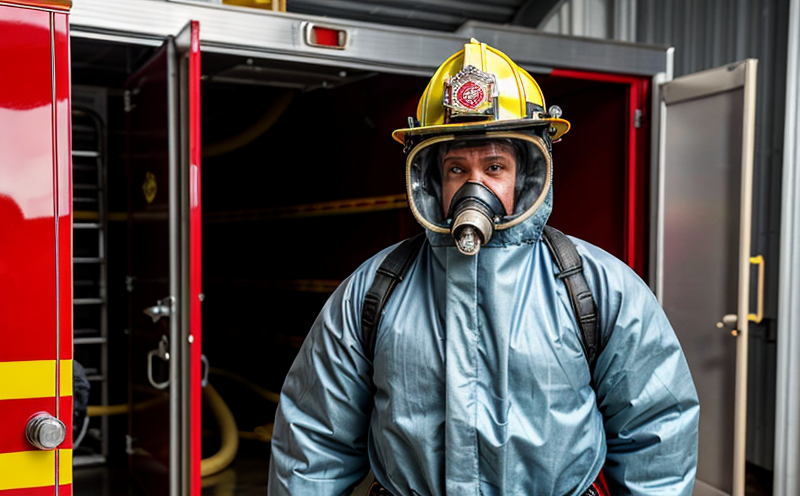Firefighter Boots EN 15090 Testing
The testing of firefighter boots according to EN 15090 is a critical aspect of ensuring the safety and effectiveness of firefighting equipment. This European Standard sets out stringent requirements for protective footwear designed specifically for firefighters, covering aspects such as thermal resistance, mechanical properties, and chemical resistance.
Thermal insulation is paramount in these boots to protect against flashover conditions, which can occur in confined spaces during a fire. The standard specifies that the boot must maintain an effective insulating layer between 10°C and 50°C under certain test conditions. This ensures that the wearer remains protected from burns even if exposed briefly.
Another key feature is the mechanical performance requirement, which includes abrasion resistance and impact absorbency. These tests simulate real-world scenarios where boots may encounter rough surfaces or heavy objects. The standard mandates that protective footwear should withstand specified levels of abuse without compromising safety.
The chemical resistance test is also crucial given the variety of chemicals firefighters might encounter at a fire scene. This part of EN 15090 evaluates whether the materials used in the boot can resist penetration by hazardous substances commonly found in firefighting environments. Proper chemical resistance prevents contamination and ensures that the boots do not degrade over time.
Testing procedures are rigorous, involving multiple stages to ensure compliance with all specified parameters. Before any testing can begin, the boots must be prepared according to strict guidelines provided within EN 15090. This preparation includes cleaning, drying, and conditioning the footwear before conducting various tests such as thermal insulation, mechanical performance, and chemical resistance.
Thermal performance is assessed using calorimetric methods where samples are exposed to controlled heat sources. Mechanical properties like abrasion resistance are measured by abrading the boot material against a standardized abrasive wheel until failure occurs. Impact absorbency tests involve dropping weights onto the sole of the boot from various heights.
After completing these evaluations, detailed reports are generated for each test performed. These documents outline findings and compare results against EN 15090 requirements. Compliance with this standard is essential not only to meet regulatory standards but also to provide firefighters with reliable gear that enhances their safety during operations.
The importance of proper testing cannot be overstated; it ensures that every piece of equipment meets the highest level of performance expected by those who rely on it most—firefighters. By adhering strictly to EN 15090, manufacturers can guarantee quality and reliability in their products, thereby contributing significantly to public safety.
| Test Parameter | Description |
|---|---|
| Thermal Insulation | Determines the ability to protect against heat transfer. |
| Mechanical Performance | Evaluates resistance to abrasion and impact absorption. |
| Chemical Resistance | Assesses ability to withstand exposure to hazardous chemicals. |
Why It Matters
The safety of firefighters depends heavily on the quality and reliability of their protective gear. Properly tested firefighter boots, particularly those compliant with EN 15090, play a vital role in safeguarding these brave individuals from severe injuries or fatalities due to accidents at fire scenes.
By ensuring that boots meet all specified standards, we help protect firefighters against potential hazards such as intense heat, sharp objects, and corrosive materials. These tests not only enhance the physical integrity of the footwear but also instill confidence among users about its longevity and dependability under harsh conditions.
The rigorous nature of EN 15090 guarantees that every pair of boots undergoes thorough evaluation before being released onto the market. This process reduces risks associated with substandard products, ultimately fostering a safer environment for all involved parties—firefighters themselves as well as civilians they serve.
- Protects firefighters from severe injuries and fatalities during operations
- Enhances physical integrity of the footwear through thorough testing
- Instills confidence among users about the boots' longevity and dependability





